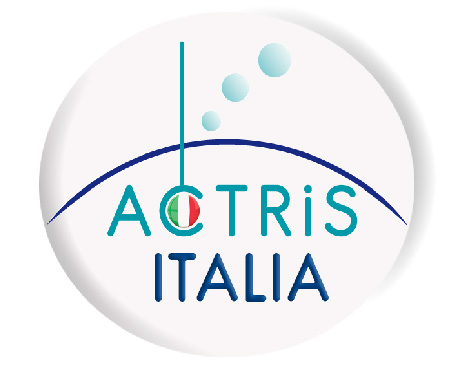After a long period of preparation and testing, on Thursday, November 12, 2020, the tethered balloon of the Aerosol&Climate Laboratory of the University of Salento, which is an ACTRIS observational site, was launched (Fig. 1) and preliminary measurements of aerosol particle properties were performed at different heights from the ground.
Different monitoring devices were installed onboard the tethered balloon to study the vertical variations of some optical and physical properties of the atmospheric aerosol, also in relation to the main meteorological parameters. More specifically, a particulate matter sampler (composed of the SKC Impact Sampler and the SKC Leland Legacy Pump) was used to collect particles on filters. A portable aethalometer AethLabs MA350 operating at different wavelengths (375, 470, 528, 625, and 880 nm) was used to monitor the aerosol absorption coefficient (σa) and a portable nephelometer (pDR-1500 Aerosol Monitor Thermo Scientific) was used to measure the aerosol scattering coefficient (σs) at 880 nm. Both devices were acquired with financial support from the Project “PER-ACTRIS-IT - Potenziamento della componente italiana dell’Infrastruttura di Ricerca Aerosol, Clouds and Trace Gases Research Infrastructure” financed by the Italian Ministry of Education, University and Research. Measurements were performed up to the height of 50 m for the lack, at present, of the relative authorizations to reach higher altitudes from the ground. Figure 2 shows measurements of the aerosol scattering and absorption coefficients and of the single scattering albedo (SSA) performed at 880 nm both at 50 and at 10 m from the ground level (agl). On average, slightly higher scattering and absorption coefficients and SSA values were measured at 50 m than at 10 m (agl). These results may be due to a greater concentration of absorbing particles at 50 m than at 10 m, likely because of the particle lifting to higher heights by convective motions as some lidar measurements also revealed
A sonic anemometer with an inertial motion sensor will also be installed onboard the tethered balloon in the first months of the next year, to investigate the changes with the height of the atmospheric turbulence and get a better understanding of the changes with the height of the aerosol properties. The tethered balloon is expected to reach the height of about 800 m after getting the relative authorizations. The balloon measurements combined with the ones of the UNILE Lidar operating within ACTRIS will allow characterizing aerosol properties up to the ground level. |
|

